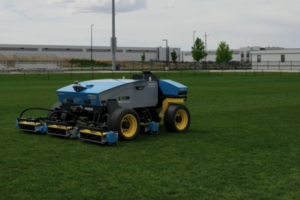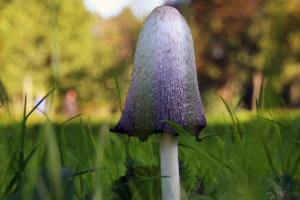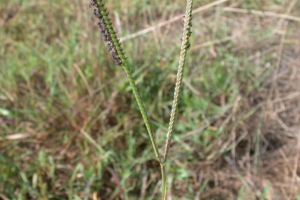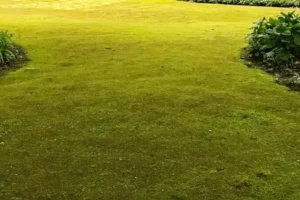
Introduction
The Evolution of Lawns
Every gardener knows that the perfect lawn doesn’t just happen overnight. It’s a journey, much like the history of lawns themselves. Once, our ancestors were content with wild meadows, letting nature take its course. But as time passed, people started seeing the potential in these green spaces. They began to shape and cultivate them, turning them into the centerpieces of their homes. Today, our lawns are more than just patches of green; they’re a testament to our love for gardening and our desire to create a personal oasis.
Modern Gardening’s Rise
Turn on the TV or flip through a magazine, and you’ll likely find a show or article about gardening. It’s become a beloved hobby for many, and there’s a good reason. Gardening isn’t just about plants; it’s about creating a space that reflects our personality and provides a peaceful retreat from the hustle and bustle of daily life. And at the heart of many gardens is the lawn. With advancements in grass breeding and care techniques, achieving that lush, green carpet has become a dream within reach for many gardeners. The quest for the perfect lawn has led to innovations and methods that make our gardens beautiful, more sustainable, and resilient.
The Magic of Grass Breeding
You might wonder, “What’s grass breeding, and why should I care?” Think of it as giving nature a little nudge in the right direction. By understanding how grass grows, what makes it thrive, and what challenges it faces, scientists and gardeners have been working together to create better grass varieties. These aren’t just grasses; they’re tailor-made to be greener, more resilient, and easier to care for. It’s like having a lawn that’s been custom-made just for you and your garden’s unique needs.
A Greener Tomorrow
All these advancements aren’t just about making our gardens look good. They’re about creating a greener future. A future where our lawns are more than just pretty to look at; they’re eco-friendly and sustainable and play a part in making our world a better place. Whether you’re just starting or have been at it for years, every gardener has a role in this exciting journey toward a greener tomorrow.
Mapping the Grass DNA
The Blueprint of Grass
Every living thing, from the tallest tree to the tiniest blade of grass, has instructions that determine how it grows, looks, and behaves. Think of it like a gardening manual, but instead of pages, it’s made up of DNA. This DNA is like a blueprint, guiding every aspect of the plant’s life. Understanding this blueprint can be like unlocking a secret gardening superpower for gardeners. By knowing what’s written in a grass’s DNA, we can predict how it will grow, what care it needs, and how it might react to different conditions.
Why Genome Mapping Matters
Now, you might wonder, “What’s genome mapping, and how does it help my lawn?” Imagine having a detailed map of your favorite city. With this map, you can find the best spots, avoid traffic, and make the most of your visit. Genome mapping is similar but shows us where specific traits are in the grass’s DNA instead of streets and landmarks. Want a grass that’s extra green? Or one that can survive with less water? With genome mapping, scientists can pinpoint where these traits come from. For gardeners, this means we can choose grass varieties perfectly suited to our gardens’ needs, making lawn care more accessible and more rewarding.
From Lab to Lawn
Having all this knowledge in a lab is one thing, but how does it benefit our gardens? By understanding grass DNA, breeders can develop new grass varieties with the best traits from different species. It’s like combining the best parts of your favorite plants into one super plant. The result? More resilient grasses require less maintenance and look fantastic. For gardeners, this means less time worrying about lawn problems and more time enjoying a beautiful, lush garden.
A Future of Tailored Lawns
Imagine a future where you can choose a grass type based on its appearance and DNA. Want a lawn that stays green even in the hottest summer? Or one that’s naturally resistant to pests? With the power of genome mapping, this future is closer than you might think. Gardeners can tailor their lawns to their needs, ensuring every garden is as unique and special as the person who tends it.
Listening to Grass Genes
The Symphony of Nature
Imagine walking through a forest and hearing leaves rustling, birds chirping, and a stream’s gentle flow. Every sound tells a story, and together they create the symphony of nature. Similarly, every plant, including grass, has genes that ‘speak’ or express themselves. These genes determine everything from the color of the grass to its resistance to drought. By ‘listening’ to these genes, we can understand the stories they tell and use that knowledge to create better gardens.
How Do We ‘Hear’ Grass Genes?
We can’t hear genes like we hear sounds, but scientists have tools to see which genes are active and which are not. It’s like tuning into different radio stations to hear different songs. By studying these ‘gene songs,’ researchers can determine what each gene does and how it affects the grass’s growth and health. For gardeners, we can get insights into how our grass behaves and how to care for it best.
The Benefits of Tuning In
By understanding which genes are ‘singing’ and which are ‘silent,’ scientists can develop grass varieties more in tune with our gardening needs. For instance, if a particular gene makes the grass more resistant to pests, ensuring the gene is active can lead to healthier lawns with fewer bugs. Conversely, genes that cause unwanted growth can be ‘turned down.’ The result? Grass that’s easier to maintain and looks better too.
A Personalized Garden Playlist
In the future, gardeners might be able to choose grass based on its ‘gene playlist.’ Want a lawn that grows slowly so you mow less often? Or one that’s naturally brighter green? By selecting grass with the right genes ‘turned on,’ you can customize your lawn to fit your preferences. It’s like creating a personalized playlist, but instead of songs, you choose the traits you want in your grass.
Discovering New Grass Varieties
The Quest for the Perfect Lawn
Every gardener dreams of that perfect lawn: lush, green, and free from pests. But achieving this dream can sometimes feel like searching for a needle in a haystack. However, thanks to the wonders of science and the study of grass genes, researchers are on a quest to discover new grass varieties that bring us closer to that dream. It’s like treasure hunting, but the prize is a better lawn instead of gold.
How New Varieties Are Born
You might wonder, “How do we get new types of grass?” It’s a mix of nature’s magic and a sprinkle of science. Researchers study the genes of different grasses, looking for traits we all desire, like drought resistance or vibrant color. They then crossbreed the best varieties, hoping to combine their best features. It’s like creating a new recipe by mixing the best ingredients. The result? A new grass variety could be the next big thing in gardening.

Why Diversity Matters
In nature, diversity is critical. Just as a garden with various flowers is more resilient and beautiful, having a range of grass varieties offers benefits too. Different grasses have different strengths. Some might thrive in the shade, while others can handle lots of foot traffic. By discovering and cultivating a diverse range of grasses, we ensure a perfect match for every garden and every gardener’s needs.
The Future of Your Lawn
Imagine a future where you walk into a garden center, and instead of just a few types of grass seed, there’s a whole range tailored for every possible need. Want a grass that’s pet-friendly? There’s a variety of that. Need something that can handle heavy rain? There’s a grass for that too. As researchers continue to discover and develop new grass varieties, the possibilities for our gardens become almost endless. It’s an exciting time to be a gardener!
Choosing the Best Grass Traits
The Beauty of Customization
Think of your favorite outfit. It fits just right, suits your style, and makes you feel confident. Now, imagine if you could have a lawn that felt the same way – perfectly tailored to your garden’s needs and your personal preferences. That’s the beauty of understanding grass traits. By knowing what each trait offers, you can choose to create the lawn of your dreams.
Traits: More Than Looks
While a vibrant green color might be the first thing we notice, grass has many traits that matter. Some grasses grow thick and plush, perfect for a soft carpet underfoot. Others are hardy warriors, standing firm against pests or diseases. And then some can survive with little water, making them champions in dry climates. Each trait is like a unique skill or talent the grass brings to your garden.
The Role of Research
Researchers play detective, diving deep into the world of grass to uncover these traits. They study how grass behaves in different conditions, how it responds to challenges, and what makes it thrive. Their findings are like valuable gardening secrets, helping us make informed choices about the grass we plant.
Making Your Choice
When it’s time to choose grass for your garden, think about what matters most to you. Do you want a lawn that’s low maintenance? Look for grasses known for their hardiness. Are you dreaming of a soft spot for picnics? Seek out plush varieties. By understanding and selecting specific grass traits, you’re not just planting seeds but crafting a garden experience tailored just for you.
Conclusion
The Marvels of Modern Gardening
Gardening has come a long way from simply scattering seeds and hoping for the best. Today, thanks to the wonders of science and dedicated research, we have the knowledge and tools to craft our dream gardens. It’s like having a magic wand where we can pick and choose the best grass traits, ensuring our lawns are beautiful, resilient, and suited to our specific needs.
A Bright Future for Our Lawns
The future of gardening is bright, and it’s green! As researchers continue to delve into the world of grasses, discovering new varieties and understanding their unique traits, we gardeners stand to benefit. Imagine a world where every lawn is lush, every blade of grass is healthy, and common gardening challenges are things of the past. It’s a world within our reach, thanks to the advancements in grass research.
Your Role in the Gardening Revolution
But remember, while science and research play a significant role, the true magic lies in your hands. As gardeners, we have the power to shape our gardens, to choose the best grasses, and to nurture them. By staying informed and making thoughtful choices, we’re not just cultivating lawns; we’re cultivating experiences, memories, and a brighter future for our outdoor spaces.
Here’s to Greener Pastures
So, as you embark on your gardening journey, armed with newfound knowledge about grasses and their traits, remember to enjoy the process. Revel in the joy of seeing your lawn thrive, celebrate the little victories, and always look forward to the endless possibilities. Here’s to greener pastures and the continued joy of gardening!
FAQ
What advancements have been made in grass research?
Modern research has allowed us to map grass DNA, understand its genes, and discover new grass varieties.
How can understanding grass traits benefit my garden?
You can choose varieties best suited to your garden’s needs by knowing specific grass traits.
Are there grasses tailored for specific conditions like dry climates?
Some grasses have traits that allow them to thrive in specific conditions, including dry climates.
How do researchers discover new grass varieties?
Researchers study grass behavior in various conditions, uncovering traits and leading to new varieties.
Can I mix different types of grasses in my garden?
Yes, but ensuring the chosen grasses are compatible with growth habits and maintenance needs is essential.
Why is it important to choose the right grass traits?
Selecting the right traits ensures your lawn is beautiful and resilient and aligns with your gardening goals.
How has gardening evolved over the years?
Gardening has evolved from simple seed scattering to using scientific knowledge to craft dream gardens.
What role do I play in the future of gardening?
Gardeners shape their gardens, choose the best grasses, and nurture them, playing a pivotal role in the future of gardening.
Gadaleta, Agata, Soriano, Jose Miguel (2023): New Breeding Technologies in Grasses. International Journal of Molecular Sciences, 24 (8), S. 7295 Online verfügbar unter: URL: https://dx.doi.org/10.3390/ijms24087295

Bob Green, a passionate lawn care enthusiast with over two decades of landscaping experience, is this website’s proud owner. His vast knowledge of horticulture and dedication to helping homeowners maintain beautiful lawns are reflected in the valuable content he shares on his platform. John has always been interested in Agrostology.













